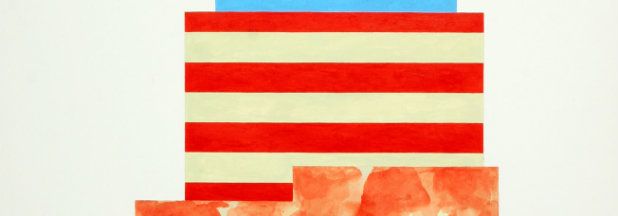

From an early stage in my career I have periodically turned to the collage to shape my aesthetic, either because I felt the need to jumpstart a stalled process or because I wanted to mark a momentous transformation of personal circumstances. This new body of works on paper has its origin in the latter: A recent radical change of course outside of the studio convinced me that without an infusion of new shapes and colors my practice, which for the last two decades had been evolving as predictably as my private life, would run the danger of feeling inauthentic. For the past year I have painted little but collaged a lot, first haphazardly, but increasingly more focused as this new process generated its own dynamic. The result is a small book of 162 collages, which in turn inspired a series of larger compositions that I started this past May during the 100W Residency in Corsicana, TX, and was followed by another series of paintings on the pages of an art book on French Impressionism.
For painters like me who are steeped in representation the collage presents a practical as well as a philosophical challenge: The flatness of the cut shape is both more abstract than its illusionistically painted equivalent and at the same time more real than any painted representation of the objective world. Indeed, a collage element’s actuality is the very reason why its incorporation maximizes the level of abstraction, and also why it is such a valuable catalyst for anyone who allows this ambivalence to enter the practice of representational painting.
Originally embodying a conceptually iconoclastic attitude, Picasso’s and Braque’s pioneering papiers collés have become a method as well as a technology, and, rather than destroying it, another proof of the vitality of painting. At more than one hundred years old, the collage is itself both disruptor and guarantor of tradition; it is continually of the current moment, quoting and sampling, just as every other cultural product in contemporary life quotes and samples. By the same token, tradition is not only, as is often assumed, a repository of answers but also an inexhaustible questionnaire – for every solution a predecessor might have found, the artist alive today can find any number of questions whose answers become the basis for their aesthetic.